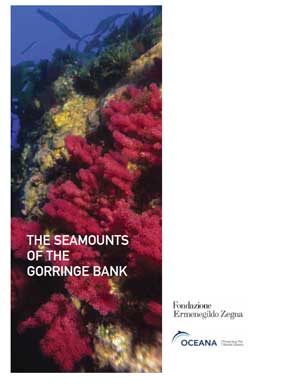Report | May 27, 2010
The seamounts of the Gorringe Bank
A seamount is a regarded as a geological elevation that reaches a minimum of 1,000 metres in height and can consist of very different physical, geological and chemical properties. Therefore, seamounts can only exist where there are sea beds more than one kilometre deep, or, which is one and the same thing, over 60%-62% of the land surface. There are also thousands of smaller elevations that tend to be known as abyssal hills (when they are less than 500 metres) or mounds (between 500 and 1,000 metres).
Whether in insolation or as part of extensive ranges, there are possibly more than 100,000 seamounts around the world. At present, close to 30,000 of them have been identified, of which around 1,000 can be found in the Atlantic Ocean, where in addition the largest range in the world can be found; the Mid-Atlantic Ridge, which stretches from Iceland to the Antarctic.
The seamounts of the Gorringe Bank were discovered in 1875 by the American exploration vessel USS Gettysburg, commanded by Captain Henry Honeychurch Gorringe, to whom it owes its name. A few years later, in the early twentieth century, Prince Alberto I of Monaco carried out various studies in the area on board the vessels “Princess Alice”, “Princes Alice II” and “Hirondelle II”, which gave their names to other large banks and seamounts between Madeira and the Azores.
Despite the large number of seamounts, it has not been until recent years that there has been an increase in scientific studies on them and they have been given the importance they deserve. Today, only 350 seamounts have been sampled and barely 100 have been studied in any detail. In the case of Gorringe, various research vessels have visited the bank to carry out sampling and undertake fidderent tasks of gathering information on its geological seismological and, to a lesser extent, biological history.
Most of the studies have been carried out by taking samples with dragnets, bottom trawl nets using different sonar systems or even with submersibles. But it was not until 1998 when the Portuguese organisation “Atlantico Selvagem”, in collaboration with the University of the Algarve, undertook the first dives to document the marine life around its peaks. These date have led to the publication of various scientific articles.



